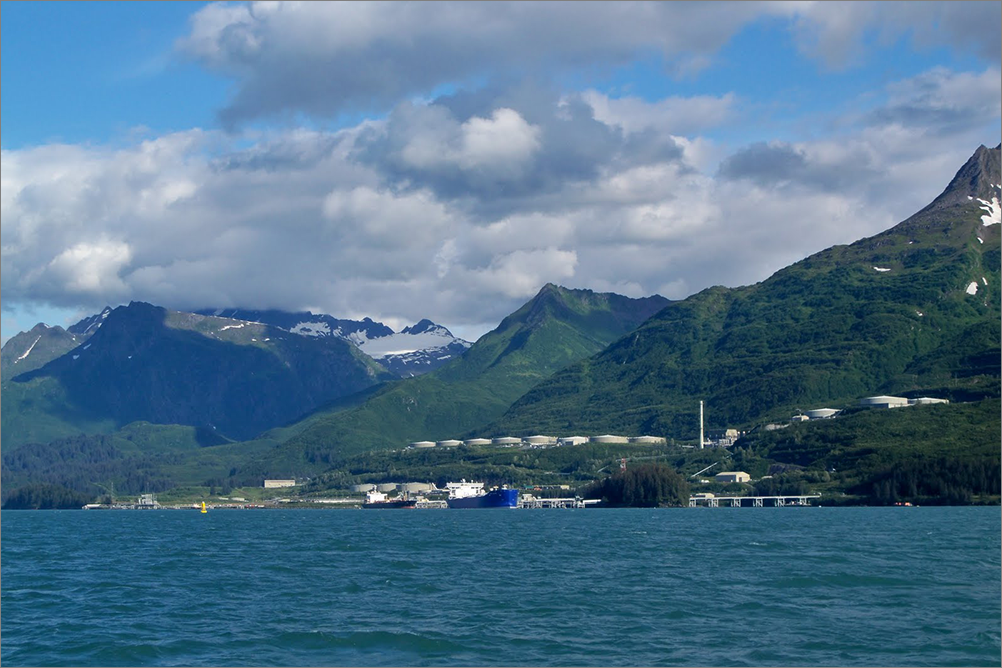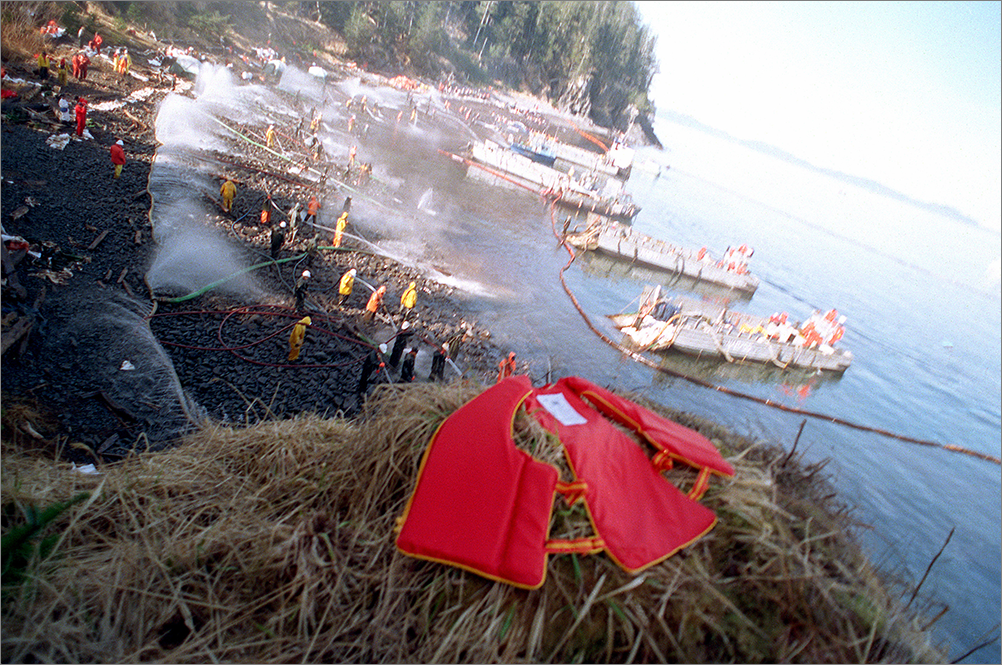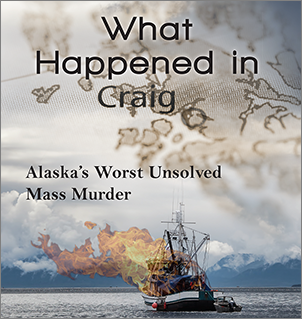The skipper neglected to point out Bligh Reef as we made the turn into Valdez Arm. Not that I would have taken the time to view it — I was fighting with the diesel galley stove. It was a little tricky to start — seemingly requiring an endless supply of matches — but it was the feed that really worried me. It was, to say the least, sputtering and inconsistent.
The range’s burners would start, flame for a while, and then inexplicably go out. The oven was a little better, in that it didn’t flame out quite as quickly. I just hoped somebody could fix this before we left Valdez for the fishing grounds. The farm kid was trying, but admitted he was better at fixing tractors.
Before long, though, we were both taken in by the vistas. As we sailed past Bligh Reef and motored into Valdez Narrows, we encountered a slender fjord bordered by snow-capped mountains that dipped straight to the sea. The waters were deep and dark, running to 700 fathoms in the center channel. With the town dead ahead and the Valdez Marine Terminal to our starboard, the sights were heavy on visual contradiction: heavy industry piously planted in the bush; a seemingly endless line of petroleum pods stretching before us; the tankers lined up like giant caterpillars ready to take on their precious nectar; the Chugach mountains overlording them in their magnificence.

Valdez Marine Terminus, end point of 800-mile Trans-Alaska pipeline (courtesy Barb & Bill Connor)
It was reasonable to wonder how well we’d do, fishing these waters that had been fouled by thousands of gallons of heavy Alaska crude. The spill, after all, was only five years distant. And even a cursory review reminded me that, in the early days of the disaster, 50-mile-per-hour winds drove that oil onto the nearby beaches. While fishermen were devastated, a new side-industry sprouted, with boats being pressed into cleanup duty — and many more on the shore, dealing with a black goo that coated everything.

Exxon Valdez shore cleanup crews
That was the next surprise: five years on little evidence of the spill remained, at least on shore. And the skipper assured us that the fishery had rebounded, aided in no small part by the Valdez fish hatchery (1).
Make no mistake: the folks who fished here were still struggling to recover from the losses they suffered when the fishery was closed. As part of that, many fishermen — my skipper included — were still awaiting a financial settlement from Exxon. That, as they say, was still in the courts.
(1) The Valdez hatchery was founded in 1982 and has a permitted green egg capacity to incubate 250 million pink salmon and 2 million coho salmon each year. With this capacity, it achieves annual releases of approximately 230 million pink salmon fry, and 1.8 million coho salmon smolt. Current average adult returns to the hatchery are approximately 13 million adult pink, and 160,000 coho salmon. After harvesting a small percentage of the return for cost recovery and brood stock, the remainder is harvested primarily by commercial purse seine fishermen.
Copyright Leland E. Hale (2018). All rights reserved.

Order “What Happened In Craig,” HERE and HERE, true crime from Epicenter Press about Alaska’s Worst Unsolved Mass Murder.